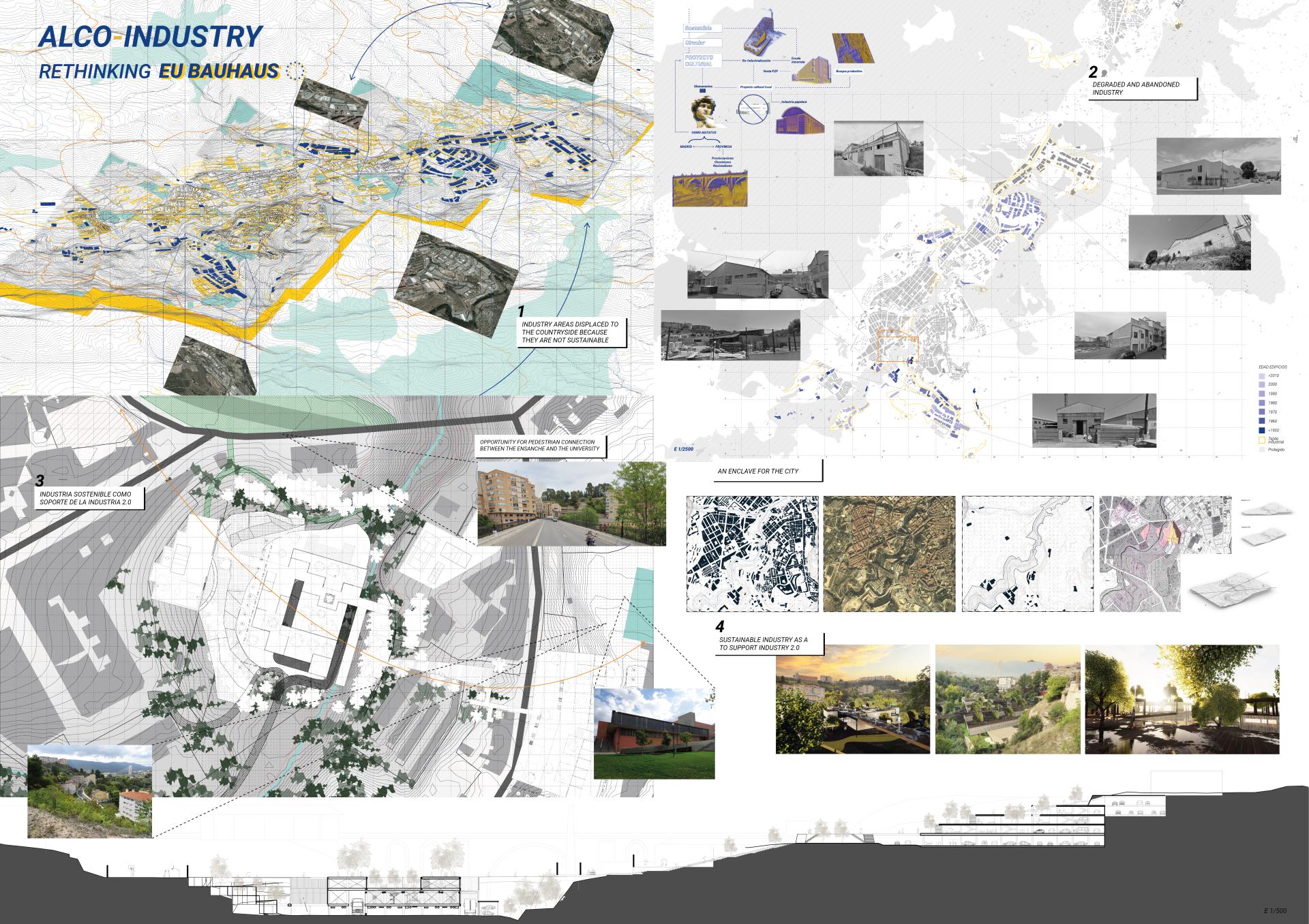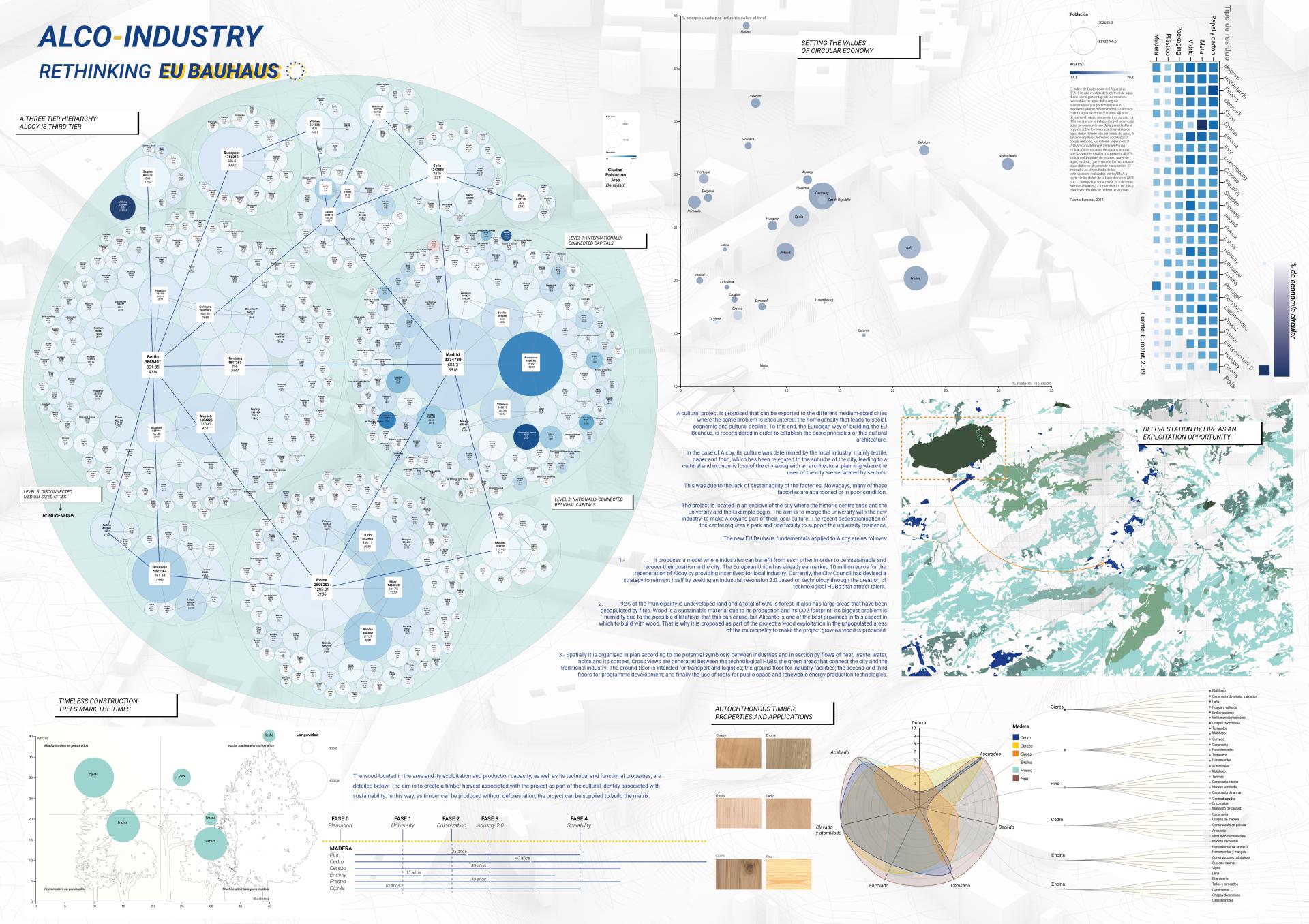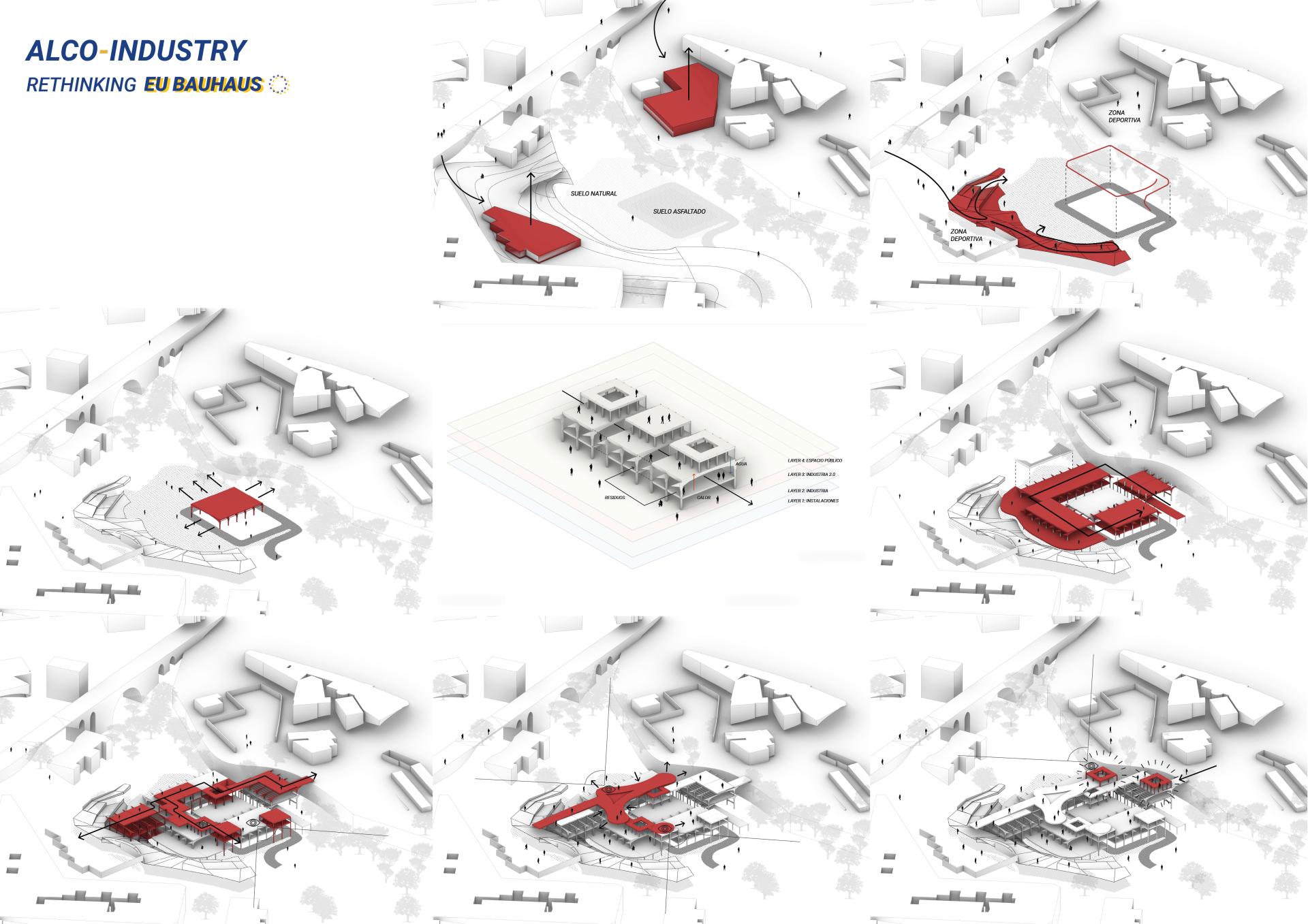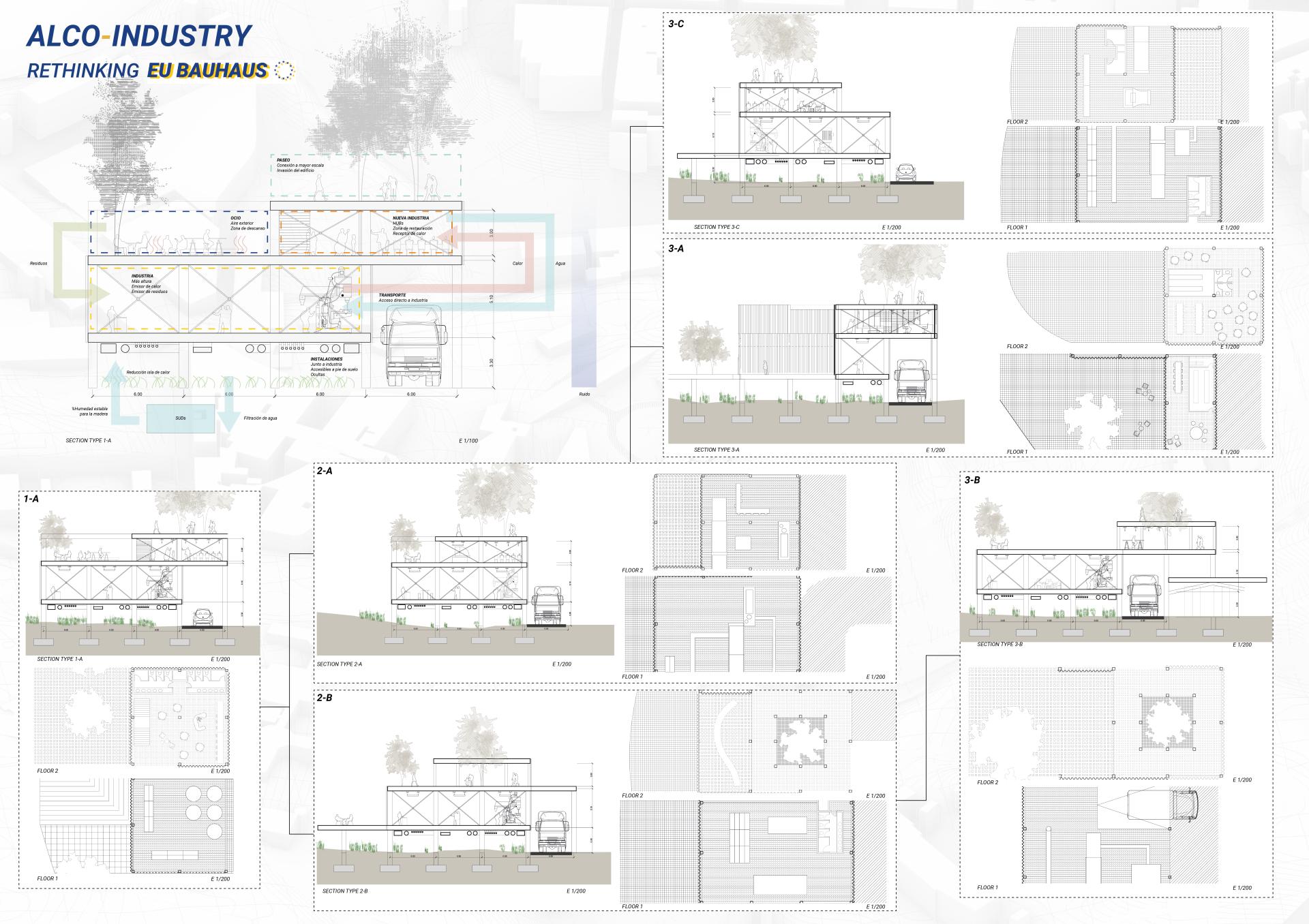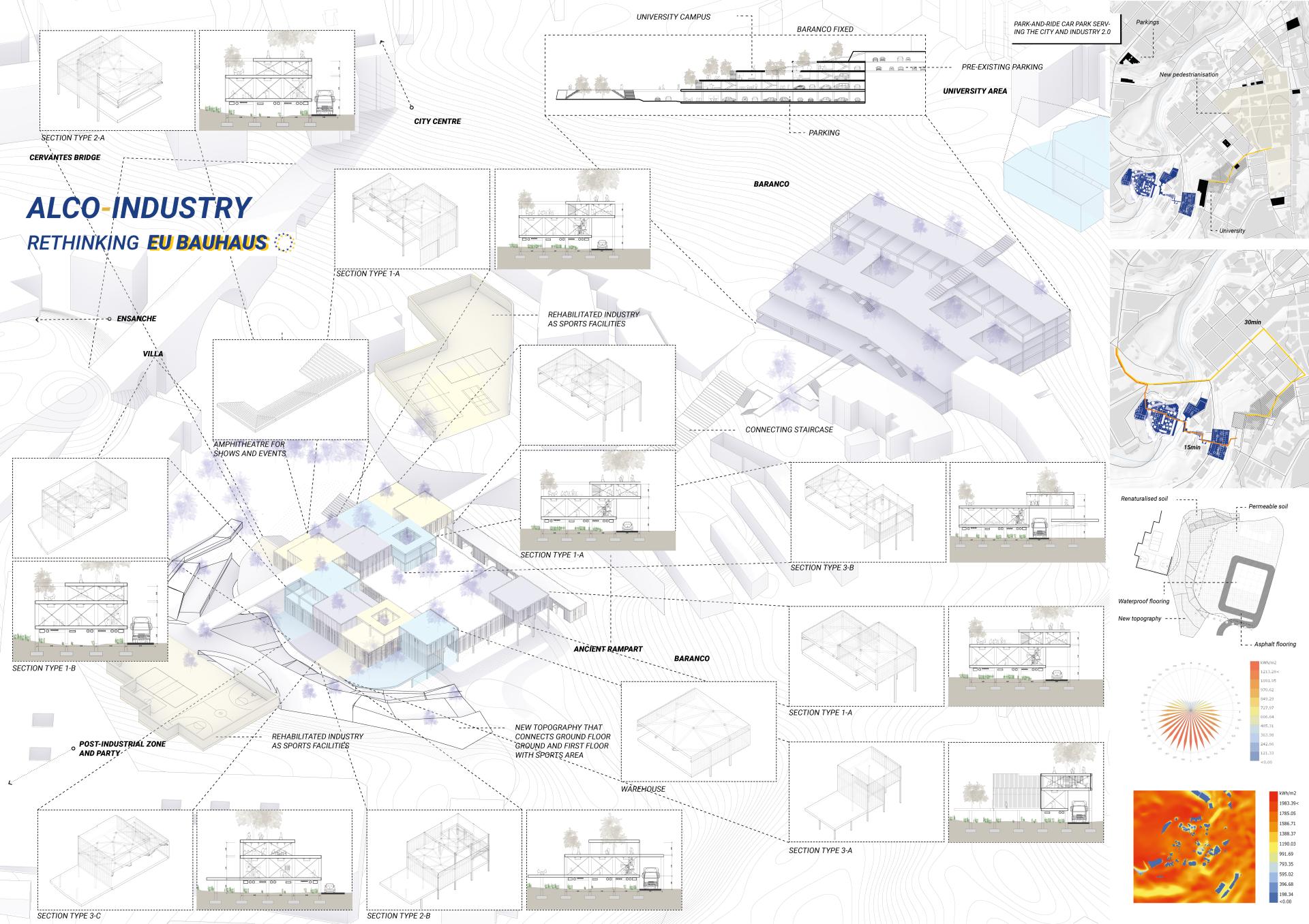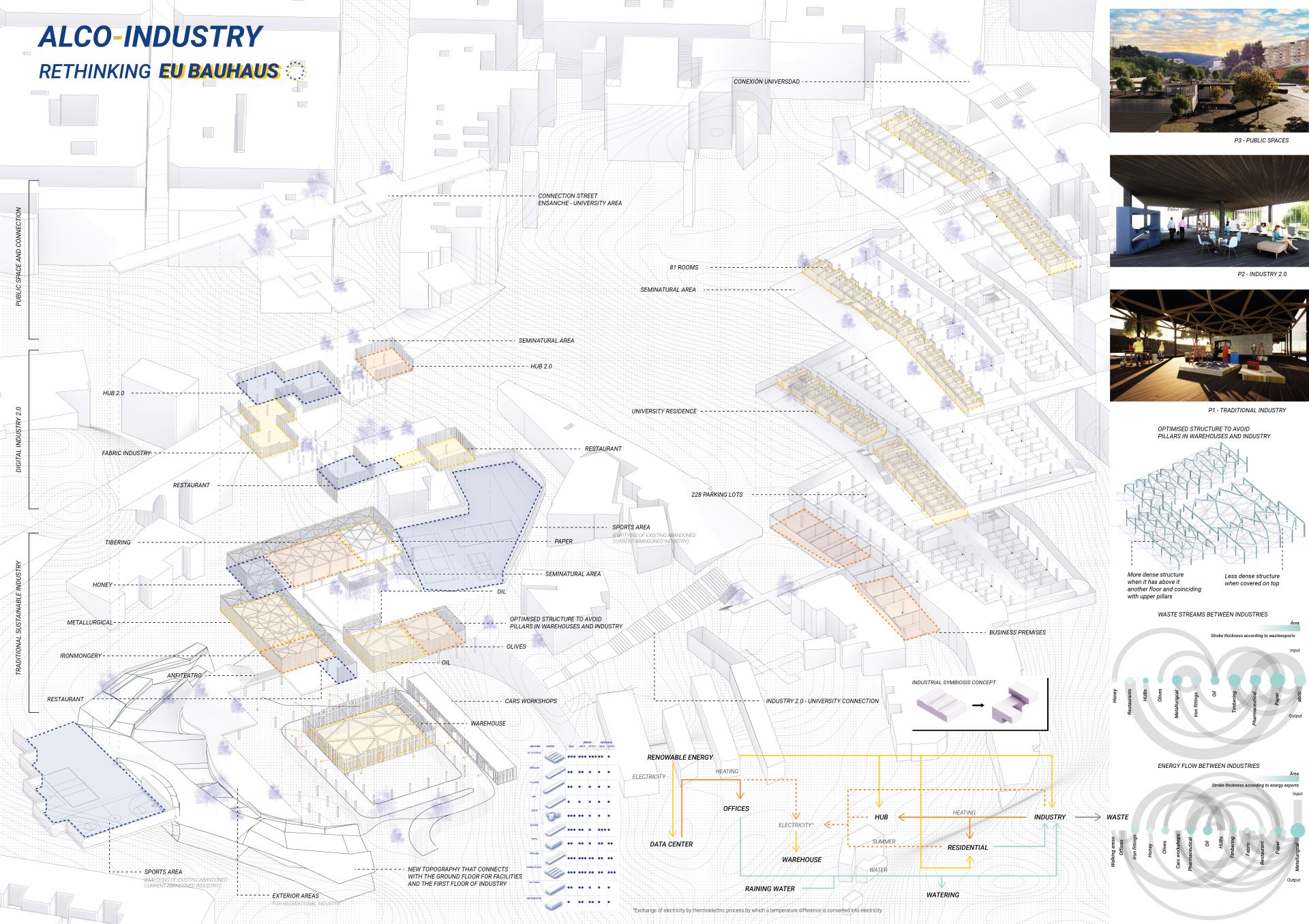Alco-Industry
Basic information
Project Title
Full project title
Category
Project Description
An industrial symbiosis is proposed in an enclave of the city of Alcoy where its local industry began and was forced to leave because it was not sustainable. In this way, the idea of local culture is reinforced through a series of ideas based on the new European way of building. Therefore, culture is promoted on two levels through architecture in order to escape from the homogenisation that the city suffers from along with other cities of similar characteristics.
Geographical Scope
Project Region
Urban or rural issues
Physical or other transformations
EU Programme or fund
Which funds
Description of the project
Summary
A cultural project is proposed that can be exported to the different medium-sized cities where the same problem is encountered: the homogeneity that leads to social, economic and cultural decline. To this end, the European way of building, the EU Bauhaus, is reconsidered in order to establish the basic principles of this cultural architecture.
In the case of Alcoy, its culture was determined by the local industry, mainly textile, paper and food, which has been relegated to the suburbs of the city, leading to a cultural and economic loss of the city along with an architectural planning where the uses of the city are separated by sectors.
This was due to the lack of sustainability of the factories. Nowadays, many of these factories are abandoned or in poor condition.
Key objectives for sustainability
Industries benefit from each other through a flow of waste, water and energy. The programme is distributed according to these parameters, bringing industries together where symbiosis can be created.
Thus, traditional industry is on the first floor, supplying value to the first floor, where industry 2.0 is located. For example, rainwater collected on the roof is used for the paper and wood industry. The waste from the paper and wood industry is burned as biofuel to produce heat.
Therefore, in order to be able to access this model, it is necessary to study beforehand what the new industry can contribute to the whole and what it can receive from the rest.
Key objectives for aesthetics and quality
Spatially it is organised in plan according to the potential symbiosis between industries and in section by flows of heat, waste, water, noise and its context. Cross views are generated between the technological HUBs, the green areas that connect the city and the traditional industry. The ground floor is intended for transport and logistics; the ground floor for industry facilities; the second and third floors for programme development; and finally the use of roofs for public space and renewable energy production technologies.
Key objectives for inclusion
The project is located in an enclave of the city where the historic centre ends and the university and the Eixample begin. The aim is to merge the university with the new industry, to make Alcoyans part of their local culture. The recent pedestrianisation of the centre requires a park and ride facility to support the university residence.
Physical or other transformations
Innovative character
When spatiality, the circular economy and a local sense of belonging come together, a socially acceptable model of sustainable industry can be created.
In this way, all citizens are involved in the project so that they can inhabit it.
This model can be exported following the premises of low embedded and operational carbon emissions, i.e. under the use of sustainably and locally produced wood and through the use of renewable energies. Along with the symbiosis between industries, this can reinforce the idea of a European culture that not only favours local culture, but also creates a sense of belonging to society as a whole.
Thus, the project sows a series of ideas, and the people water it, so that anywhere in Europe you can sow the idea and create a totally different result under the same ideas.

